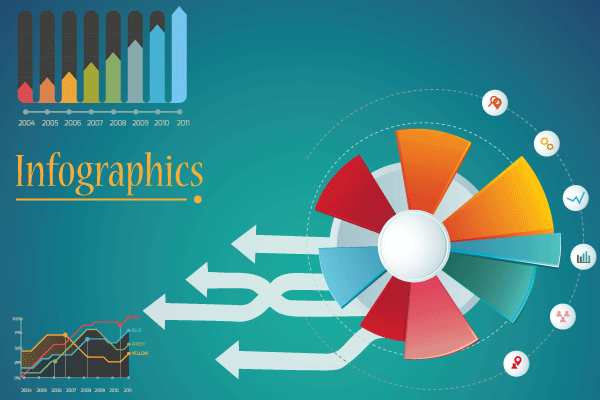Do you have to convince your audience about topics which are complicated and confusing; which are important but boring? Every digital marketing agency is faced with this problem. Infographics is the best solution for effectively expressing complicated information.
It lets you pack information in less space intelligently. Often, a digital marketing agency will have to create efficient information presentations focusing on a lot of facts and figures. Over the years, comparing things like prices or representing a long list of serial data has seldom been practical that you had to put them into written content. With infographics, you can distribute data in a visually appealing way.
Read Also: Role of Visual Content in Digital World
Let us look at some tips that will help you create kickass infographics.
1. Catchy Headline
Your infographics headline is extremely important. It is the backbone of your presentation. Since the amount of content in an infographics is ideally kept to the possible minimum, the attention
Your infographics headline is extremely important. It is the backbone of your presentation. Since the amount of content in an infographics is ideally kept to the possible minimum, the attention
2. Include Visual Representations for Your Data
Infographics as the name suggests, lets you represent information visually. The info that is represented should be clear-cut and accurate because discrepancies are bound to get noticed faster when you represent data visually. There should be a balance maintained between the written content and graphical data that goes into your infographics.
Though visual elements are important, do not overload it with too much designs or flashy colors. Limit the number of different colors used to three. Use appropriate images, charts and diagrams. Whenyou want to represent lengthy data, use line graphs and when you want to represent proportional data, use pie charts. Use compact and standardized designs for more serious topics.
3. Keep it Simple and Focused
The main reason infographics is widely adopted is due the simplicity with which data could be represented compared to the written content. Overloaded data and design complexity can create confusion and it will get misinterpreted by the viewers. To get a simple design, you should concentrate on things such as limiting the number of colors and font sizes used, readability of font types selected etc. Also use simple understandable language and appropriate charts.
Another important thing that you need to focus on is the ‘focus’ itself i.e., the idea represented in the infographics should be focused. Do not drift away from the subject under discussion. Cut elaborations and unwanted references. When you have a lot of data to put into your infographics, divide them into sub-headings and put them in separate infographics that focus on each individual idea.
You May also Like: Ways Digital Marketing Will Change In 2016
4. Create a Natural Flow
When presenting the information in an infographics, it is best advised to be arranged in a sequential format. Do not dump the ideas together or throw them randomly without any connection between them. Ideas should be integrated and should flow from one to another in an ordered fashion.
5. White Spaces are Important
Spacing the content is important for readability and cognition of the data. The right arrangement should have the perfect balance between used space and unused space in the infographics. Overly packed graphics could repel the viewer from reading through the content, and too much negative spacing will generate the opinion in the reader’s mind that the infographics is not worth reading.
6. Check your Facts and Figures
It is important that you always double check the facts and figures. An infographics reader could pinpoint contradictions and errors more accurately since there is more readability of the facts and figures. Once viewers find a single inaccuracy, they will resort to thinking that the whole information presented can probably be wrong. Keeping a close check on these tips is crucial for the success of infographics created by your digital marketing agency.
![20 Ideal Places To Share Your Content [Infographic]](https://wp.jointviews.com/wp-content/uploads/2018/07/INFo-jv-Featured-image-1.png)

